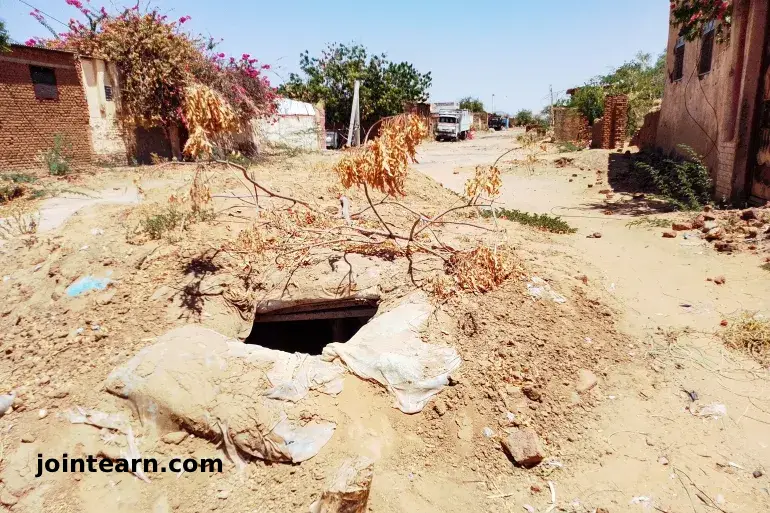
Sudan Conflict Deepens as Army Battles RSF in El-Fasher and Bara Amid Worsening Humanitarian Crisis
Renewed fighting between Sudan’s military and the Rapid Support Forces has plunged North Darfur and North Kordofan into chaos as millions face starvation and displacement.
Heavy Fighting Engulfs El-Fasher and Bara
KHARTOUM, October 25, 2025 — Intense fighting has erupted once again across Sudan, as the Rapid Support Forces (RSF) mount aggressive assaults on the besieged city of el-Fasher in North Darfur and the strategically vital city of Bara in North Kordofan. The escalation marks one of the deadliest surges in Sudan’s civil war since the conflict began in April 2023.
According to military sources, the RSF launched multi-pronged attacks on Bara — located roughly 350 kilometres southwest of Khartoum — early Saturday morning. The Sudanese Armed Forces (SAF) responded with heavy artillery, sparking hours of fierce urban combat.
“Bara remains under the army’s control, but the RSF has surrounded it from nearly all sides,” a military official told Al Jazeera. “Communication lines were severed after the first wave of attacks, leaving the situation uncertain.”
Simultaneously, columns of black smoke rose above el-Fasher, the capital of North Darfur, as both sides exchanged artillery fire and drone strikes. Residents described the fighting as some of the most intense since the RSF began its siege of the city more than a year ago.
The RSF released videos on social media claiming to have captured the North Darfur governor’s residence and to be advancing toward the 6th Infantry Division’s headquarters, the main army base in the city.
Army officials, however, said their forces had repelled multiple waves of attacks and inflicted heavy losses on the paramilitary group.
“It’s happening everywhere, even near me,” said one resident trapped in el-Fasher. “An artillery shell landed about 100 metres away. We are living in terror every day.”
Humanitarian Catastrophe Unfolding in El-Fasher
The renewed clashes have compounded what aid agencies describe as a catastrophic humanitarian crisis.
Dr Razan Al-Mahdi, spokesperson for the Sudan Doctors Network, warned that conditions in el-Fasher have “surpassed all comprehension.”
“Every passing day, we lose no fewer than three children due to malnutrition, disease, and the complete collapse of medical and humanitarian infrastructure,” she said.
According to four United Nations agencies, over 250,000 civilians — half of them children — are trapped without access to food, clean water, or healthcare due to the ongoing siege.
Health facilities have been destroyed, and medical supplies have run out. The UN Children’s Fund (UNICEF) and Save the Children reported that 17 children were killed and 22 injured in el-Fasher during October alone.
“This is no longer a crisis — it is a catastrophe,” said Save the Children’s Sudan country director, calling for urgent international intervention.
Infrastructure Attacks and Drone Strikes Escalate
Both the RSF and SAF have increasingly resorted to drone warfare, devastating civilian infrastructure.
On Tuesday, RSF drones targeted power facilities, causing massive blackouts across several cities and injuring six energy workers.
Meanwhile, for the fourth consecutive day, RSF drones also struck Khartoum International Airport, which the army had been preparing to reopen after retaking control of the capital in March. Plans to resume operations have now been postponed indefinitely.
UN Special Rapporteur Radhouane Nouicer expressed alarm over the “rapid escalation in aerial warfare,” warning that drone attacks on populated areas constitute serious violations of international humanitarian law.
Death, Displacement, and Desperation
Since the start of the civil war in April 2023, the conflict between the Sudanese army, led by General Abdel Fattah al-Burhan, and the RSF, commanded by Mohamed Hamdan Dagalo (Hemedti), has killed tens of thousands and displaced more than 12 million people.
The United Nations estimates that 30 million Sudanese — two-thirds of the population — now require humanitarian aid, making it the world’s largest humanitarian disaster.
Food insecurity has reached catastrophic levels in Darfur and Kordofan, with aid convoys unable to reach besieged areas due to ongoing fighting and RSF blockades on major routes.
“We are watching entire communities starve to death,” said a UN field worker in Nyala, South Darfur. “The humanitarian response is collapsing under the weight of violence and indifference.”
Diplomatic Efforts Falter
Efforts to broker peace have made little progress. Sudan’s Foreign Minister Mohieldin Salem travelled to Washington, D.C., this weekend for talks on humanitarian cooperation and potential ceasefire frameworks.
However, the Ministry of Foreign Affairs later denied reports that indirect negotiations were underway between the SAF and RSF.
Despite international condemnation, foreign mediation remains stalled, with United States President Donald Trump focusing on crises in Gaza and Ukraine, leaving Sudan lower on Washington’s foreign policy agenda.
“The war in Sudan has become the forgotten conflict,” said analyst Hafiz Musa of the Sudan Policy Forum. “Without sustained diplomatic pressure, the violence will only escalate — and famine will consume more lives.”
A Nation on the Brink
As the war enters its third year, analysts warn that Sudan is nearing total state collapse. The fragmentation of power among rival militias, coupled with deep ethnic divisions and resource scarcity, has made peace elusive.
“El-Fasher is symbolic — whoever controls it controls the gateway to Darfur,” explained regional security expert Amani Idris. “If it falls, the entire western front could be lost to chaos.”
With millions displaced, children dying of hunger, and cities reduced to rubble, Sudan’s civil war has become one of the gravest humanitarian and geopolitical crises of the 21st century.
Leave a Reply